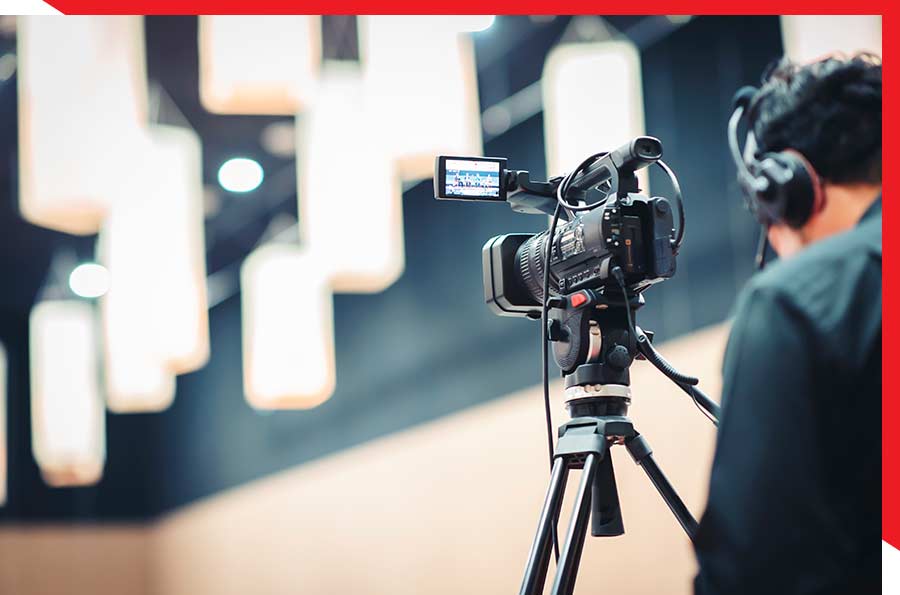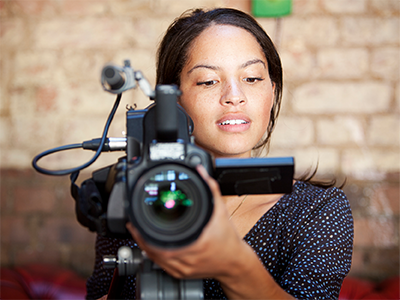The Duty of Legal Videography in Modern Legal Process
Wiki Article
Exploring the Systems of Lawful Videography: Unveiling Its Operation in Safeguarding Authentic Aesthetic Testament for Judicial Process
In the realm of judicial proceedings, the function of legal videography stands as a keystone in protecting and offering visual proof. As technology proceeds to advance, the systems behind lawful videography have actually come to be increasingly elaborate, supplying a crucial layer of credibility to statements caught on video.Historical Advancement of Legal Videography
Analyzing the historical development of lawful videography reveals a considerable transformation in the capturing and discussion of aesthetic proof within the lawful landscape. In the past, lawful proceedings heavily depended on created photos and records to record occasions and offer proof. However, with the introduction of video clip modern technology, the lawful industry saw a paradigm change in just how aesthetic testament was recorded and presented.The advancement of lawful videography can be mapped back to the late 20th century when innovations in video clip recording tools made it extra accessible for usage in court rooms. This technical advancement not only improved the precision and integrity of visual proof yet likewise revolutionized the means situations were presented to courts and juries (Legal Videography). Lawyers began to acknowledge the persuasive power of video recordings in sharing feelings, nuances, and non-verbal cues that written records or pictures alone could not record properly

Technology Advancements in Video Documentation
What key technical innovations have changed video clip documents in the legal field? The legal area has actually seen significant advancements in video clip documentation technology that have actually enhanced the authenticity and reliability of visual proof in judicial procedures. One of the key advancements is high-def (HD) video recording capabilities, which provide crystal-clear photos and sharp details that are important for accurately recording statements, faces, and various other aesthetic cues. In addition, the integration of timestamping and metadata attributes in video clip documentation devices has actually enabled specific paperwork of when and where the video was videotaped, making sure the integrity of the proof presented in court.Moreover, innovations in video file encryption and watermarking technologies have actually bolstered the protection and tamper-proof nature of video proof, safeguarding it versus unauthorized modifications or meddling. The introduction of cloud storage options and remote accessibility capacities has streamlined the storage, access, and sharing of video clip proof, promoting smooth collaboration among legal professionals and guaranteeing effective access to important aesthetic testaments when required. These technical improvements in video clip documents have actually most certainly revolutionized the lawful area, boosting the precision, reputation, and admissibility of aesthetic proof in judicial procedures.
Duty of Lawful Videographers in Court Settings
The advancement of video clip documentation technology in the lawful field has demanded a published here crucial duty for legal videographers in courtroom setups, making certain the stability and reliability of aesthetic statements presented throughout judicial procedures. Legal videographers play a fundamental function in recording and maintaining exact aesthetic proof that can be crucial in lawsuit. Their responsibility expands to establishing equipment, videotaping process, and creating top notch video clips that accurately mirror the events in the court room.
In courtroom settings, legal videographers have to abide by rigorous guidelines and criteria to maintain the authenticity of the aesthetic record. They need to possess a keen eye for information and a complete understanding of legal procedures to make certain that the footage they catch is a real representation of the occasions that took place. Additionally, legal videographers usually work very closely with lawful teams to guarantee that the video clip proof aligns with the situation's needs and can be effectively provided in court to sustain the lawful arguments being made. In general, the function of lawful videographers in court room settings is important in promoting the concepts of justice and ensuring the transparency of legal procedures.

Ensuring Admissibility and Stability of Video Clip Proof
To maintain the reputation of visual evidence provided in lawful proceedings, guaranteeing the admissibility and stability of video clip proof is a crucial obligation for site link lawful videographers. Admissibility describes the acceptance of evidence by the court, and for video evidence to be permissible, it has to meet specific requirements. Lawful videographers play a critical role in guaranteeing that the videos they catch abide by the regulations of proof, such as integrity, credibility, and importance.Honesty of video clip proof entails keeping the creativity and precision of the video from the moment it is videotaped until it is offered in court. This consists of firmly storing the video files, recording the chain of guardianship, and avoiding any tampering or changes. Lawful videographers must comply with strict methods to assure the stability of the video proof and protect against any type of difficulties to its authenticity.
Future Trends in Legal Videography
Provided the enhancing dependence on modern technology in legal proceedings, lawful videographers are positioned to embrace cutting-edge innovations shaping the future of visual testament capture and presentation. Among the famous patterns on the perspective is the assimilation of virtual fact (VR) and augmented fact (AR) innovations right into legal videography. These technologies have the prospective to revolutionize just how visual proof exists in court rooms, enabling discretionary to submerse themselves in the scene of the crime or case.Additionally, the use of man-made intelligence (AI) algorithms for video clip analysis is anticipated to improve the procedure of evaluating and assessing large quantities of video clip footage. AI can help in identifying key minutes, abnormalities, and patterns within videos, enhancing the effectiveness of legal investigations.

Conclusion
In verdict, legal videography has actually played an important duty in offering genuine visual proof for judicial proceedings. With technological improvements and the knowledge of lawful videographers, the integrity and admissibility of video clip proof are guaranteed in court room settings. As legal videography proceeds to evolve, it will be necessary to support criteria that maintain the accuracy and dependability of aesthetic testimony for the future of legal procedures.Examining the historical development of lawful videography discloses a significant improvement in the capturing and presentation of visual proof within the lawful landscape.The advancement of video paperwork innovation in the lawful area has actually necessitated an important function for legal videographers in court settings, ensuring the integrity and integrity of aesthetic testimonies provided during judicial procedures. Additionally, legal videographers commonly function closely with legal groups to make certain that the video clip proof straightens with the instance's requirements and can be effectively presented in court to support the legal arguments being made.To maintain the trustworthiness of visual evidence presented in legal proceedings, ensuring the admissibility and integrity of video clip proof is an essential duty for lawful videographers. As lawful videography continues to develop, it will be important to support standards that keep the precision and dependability of visual testimony for the future of lawful process.
Report this wiki page